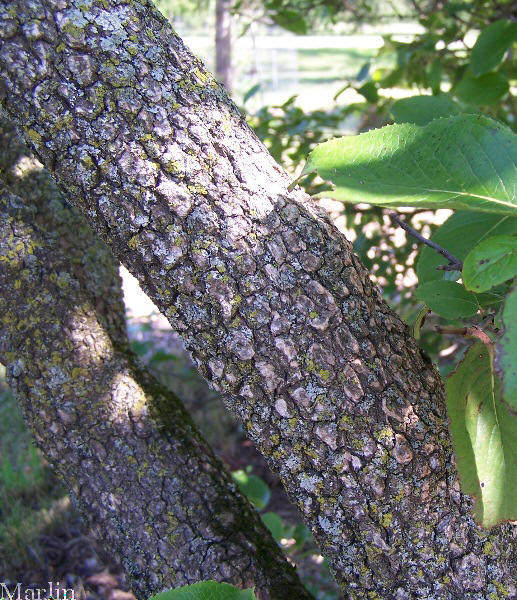Southern Black Haw – Viburnum rufidulum
Family Adoxaceae. Also called rusty blackhaw, bluehaw, rusty nannyberry. USDA hardiness zones: 5B through 9
A native of the well-drained, upland woods of southeastern North America, Rusty Blackhaw forms a multiple or single-trunked small tree or large shrub, reaching 25 feet in height with an equal spread.
Leaves are dark green, three inches long, leathery, and extremely glossy.
The tree is covered in springtime with striking five-inch-wide clusters of small, white blooms. These flowers are followed by clusters of dark blue, waxy, one-half-inch-long fruits that are extremely popular with wildlife and will occasionally persist on the plant from September throughout the autumn. 
Rusty Blackhaw will grow and look nice in full sun or partial shade on any reasonably fertile, well drained soil.
Height: 20 to 25 feet / Spread: 20 to 25 feet / Crown uniformity: irregular outline or silhouette / Crown shape: vase shape / Growth rate: slow.

References
1. Edward F. Gilman and Dennis G. Watson, Univ of Florida ENH-819/ST662 Siebold Viburnum
2. Wikipedia, the free encyclopedia, Viburnum
3. The Arbor Day Foundation, Viburnum
4. USDA, ARS, National Genetic Resources Program. USDA Fact Sheet ST-661 October 1994
Family Adoxaceae. Viburnum is a genus of about 150-175 species of shrubs or small trees that were previously included in the family Caprifoliaceae.
Tree Encyclopedia | Tree Index | Fabaceae Index | Birch | Oak
